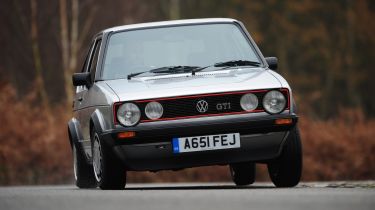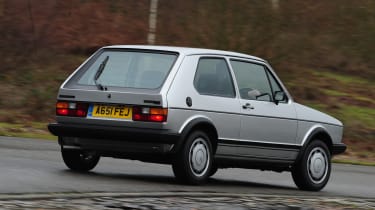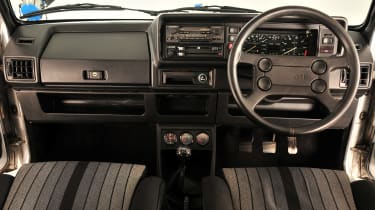Icon Review: Volkswagen Golf GTI Mk1 (1976 - 1983)
In the first instalment of our Icon Review series, we drive the hot hatch that started it all - the Mk1 Volkswagen Golf GTI
The modern hot hatchback market owes its success to this car, the original Volkswagen Golf GTI.
There had been tuned versions of family cars before the Golf, like the Mini Cooper S, for example, but the Mk1 GTI defined the template for the modern hot hatch. It combined performance and handling to rival some sports cars with a level of usability and quality that meant it could be your family car and was deeply desirable.
Yet VW never planned to make a hot Golf after the all-new model replaced the ageing rear-engined, rear-wheel-drive Beetle. This was the seventies, and the oil crisis meant frugal, cheap-to-run cars were more important to buyers.
An internal project went under the radar for a few years before it was given the green light by the VW board. By 1975, the GTI had made its debut at the Frankfurt Motor Show, then it went on sale in 1976, and owners got to sample exactly what those three letters stood for.
The production car used a 108bhp 1.6-litre engine with mechanical fuel injection, a four-speed manual gearbox controlled by that now-iconic golf ball gearknob, and a lowered, tweaked chassis set-up that gave the GTI the grip, handling, agility and involvement it became famous for.
Sprinting from 0-62mph in 9.1 seconds, it’s not fast by today’s standards, but it was less than two seconds behind a contemporary Ferrari Daytona.
Used - available now

2024 Volkswagen
Taigo
35,786 milesManualPetrol1.0L
Cash £14,197
2023 Citroen
e-C4
18,233 milesAutomaticElectric
Cash £13,697
2018 Mercedes
A-Class
45,973 milesManualPetrol1.6L
Cash £13,097
2021 MINI
5-Door Hatch
59,280 milesManualPetrol1.5L
Cash £10,197It was the detail and quality that made the Golf great, too. The GTI badging and iconic red trim around the grille that housed those round headlights, the lovely and clear square clocks on the dash, and the auxiliary dials in the car in our pictures were great touches.
Fast forward to today, and it’s clear to see the ancestry of the forthcoming Mk8 Golf GTI; even if there will be much more technology in the new car, its position in the market and what it offers to buyers are virtually unchanged.
What's it like to drive?
While the GTI is light by modern standards, weighing around 810kg, you still have to work that engine hard and extend it to get it going – but the fuel-injection system means throttle response is good, and that the raspy engine likes to rev, too.
But the GTI isn’t just about straight-line pace. The relative lack of mass comes into its own when you experience the car’s handling; the Golf feels genuinely light, agile, and keen to corner surprisingly hard given it’s a 45-year-old design.
The steering weights up and is heavier than in a modern hot hatch, but the trade-off is that it also offers much more communication.
One of the real thrills is managing everything. That weighty steering still has a little kickback, while the brakes need a good prod – but that’s to be expected given what we’re used to, and the change in engineering approach after all these years.
The GTI’s engine and mechanical-feeling, but slightly vague shift action are at the heart of the experience. Even today, in a world dominated by turbochargers and the flexibility these give, the GTI feels quick enough, thanks to its lack of bulk. You have to work it, but that’s the joy of the package. All the parts feel like they work so well with each other – like the car was designed by engineers who really understood each other’s goals and worked together to achieve one objective.
It’s almost half a century old, the Mk1 Golf GTI, but even today you can sense the magic that made this car so special and why it revolutionised this sector forever.
| Model: | Volkswagen Golf GTI Mk1 |
| Price then: | £6,500 |
| Engine: | 1.6-litre 4cyl petrol |
| Power: | 108bhp |
| Transmission: | Four-speed manual, front-wheel drive |
| 0-62mph: | 9.1 secs |
| Top speed: | 110mph |
Check out our other 'Icon Reviews' here:








